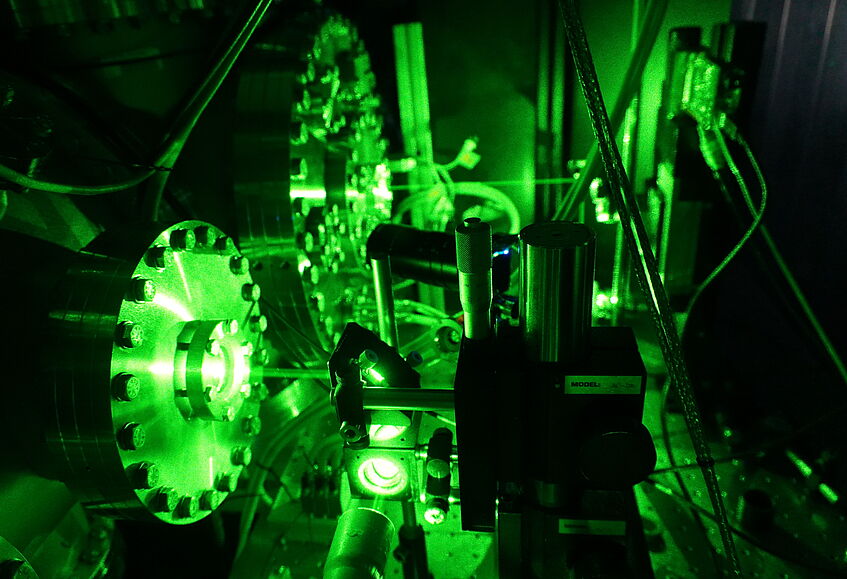Optical grating for matter-wave interferometry

© Sebastian Pedalino
Title of the project: Multi-Scale Cluster Interference Experiment
Name of the VDSP student: Sebastian Pedalino
Project supervised by: Markus Arndt
I work on the Long-Baseline Universal Matter-wave Interferometer (LUMI) experiment with which we were able to show quantum superposition of massive molecules consisting of up to 2000 atoms and masses up to 28.000 amu. To show interference of even more massive objects we have to adapt our current setup. During the course of my Ph.D., I will upgrade LUMI to an all-optical interferometer using three UV-gratings (266 nm) and implement a compatible metal cluster source to the setup. The source is capable of producing size-selected metal clusters ranging from single atoms to beyond 10.000 atoms per particle. This will allow us to extend interferometry to a new material class and exceed the current mass-record (28.000 amu) and macroscopicity (14.1), currently held by LUMI, by orders of magnitude. The high sensitivity of LUMI will furthermore allow us to study properties of size-selected clusters while they undergo a transition from semi-molecular states to condensed matter. During the course of my PhD I will upgrade LUMI to an all optical interferometer using three UV-gratings (266 nm) and implement a compatible metal cluster source to the setup. The source is capable of producing size-selected metal clusters ranging from single atoms to beyond 10.000 atoms per particle. This will allow us to extend interferometry to a new material class and exceed the current mass-record (28.000 amu) and macroscopicity (14.1), currently held by LUMI, by orders of magnitude. The high sensitivity of LUMI will furthermore allow us to study properties of size-selected clusters while they undergo a transition from semi-molecular states to condensed matter.
The image shows the main vacuum chamber of the current LUMI setup. One of the three gratings of the interferometer is currently realized by a green standing light wave (532 nm) which can be seen in this image. We use it to imprint a phase modulation to the coherent molecular beam such that we can observe an interference pattern when we detect the molecules behind the third grating. The second green laser beam on the picture enters the vacuum chamber for the purpose of metrology measurements. We currently use it to excite fullerenes to a triplet state in which the molecules exhibit a different magnetic moment, thus a different deflection in a magnetic field.
